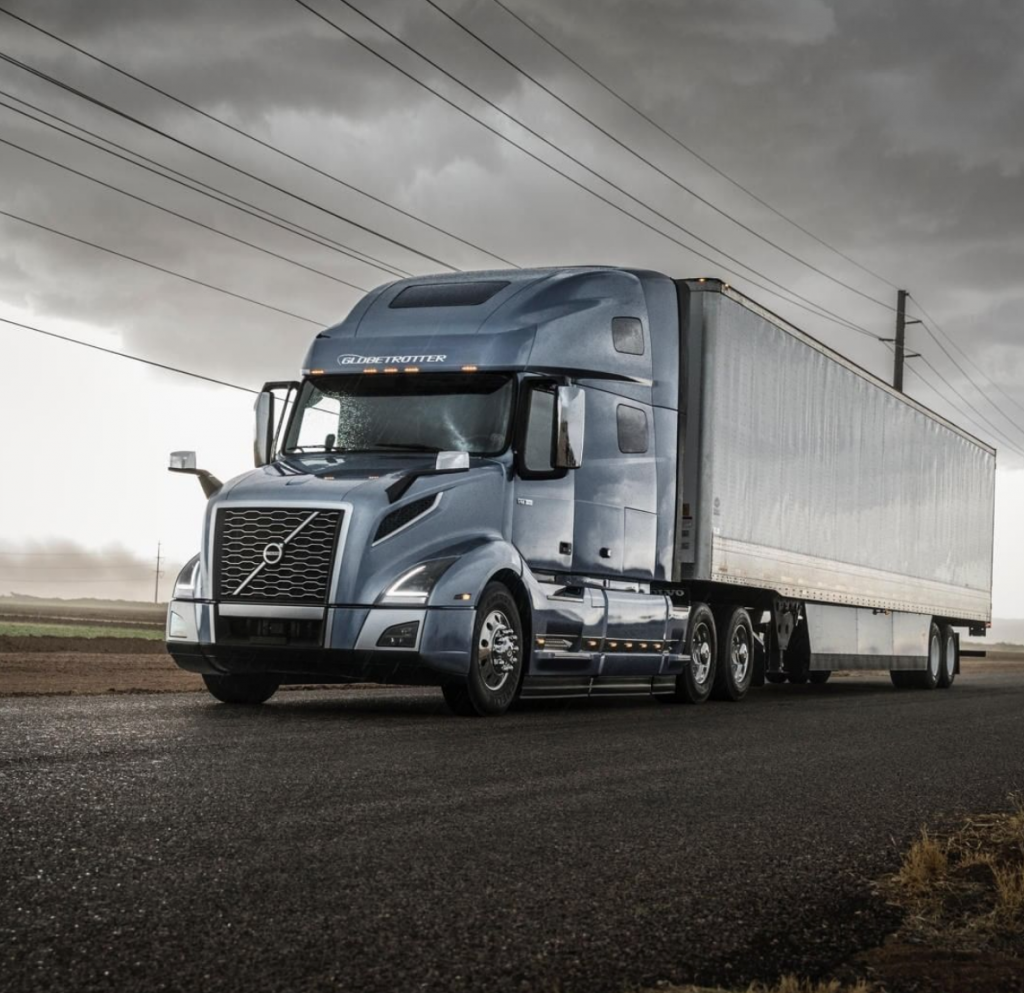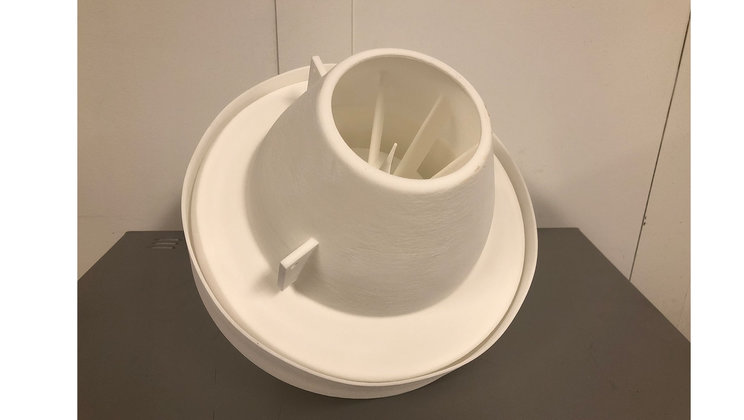 North America is a major market for the Volvo Group, representing about 28 percent of its total 2018 sales. With nine manufacturing facilities in six US states, as well as three plants in Canada and one in Mexico, the Swedish leading manufacturer of trucks, buses, construction equipment, and marine and industrial engines needs to produce a range of tools and fixtures for their manufacturing and assembly lines in less time than it used to. Especially for their Volvo Trucks segment, since company truck sales rose by 17% to 390.8 billion Swedish Krona (SEK) or 40.5 billion dollars in 2018.
North America is a major market for the Volvo Group, representing about 28 percent of its total 2018 sales. With nine manufacturing facilities in six US states, as well as three plants in Canada and one in Mexico, the Swedish leading manufacturer of trucks, buses, construction equipment, and marine and industrial engines needs to produce a range of tools and fixtures for their manufacturing and assembly lines in less time than it used to. Especially for their Volvo Trucks segment, since company truck sales rose by 17% to 390.8 billion Swedish Krona (SEK) or 40.5 billion dollars in 2018.
High transport volumes and good freight rates in the North American economy, means increases in vehicle sales in a truck market that is becoming extremely innovative. As of this year, autonomous Volvo FH trucks are being tested at the Brønnøy Kalk mine in Norway, transporting limestone along a five-kilometer stretch. This is Volvo Trucks’ first autonomous solution in real operation, but we can definitely expect more from the company which seeks to improve productivity and safety with its famous line of trucks.
Volvo Trucks North America is now using 3D printing technology to produce tools and fixtures used in the manufacturing process at its New River Valley (NRV) plant in Dublin, Virginia, US, where all trucks for the North American market are built. The technology will enable quicker production and continuous quality improvements that could make a difference in the way their medium to heavy-duty trucks will be built in the next decade.
“Volvo Trucks began exploring the use of 3D technology with a prototype approach, identifying opportunities to improve quality in the manufacturing process,” said Franky Marchand, Vice President and General Manager of NRV. “Several years later, we can now say that 3D printing has become an integral component to our manufacturing processes and culture at NRV.”
After years of internal research with 3D printing technology and fine-tuning, there are now more than 500 3D printed manufacturing tools and fixtures in use on the NRV shop floor. All of these parts were printed at the Volvo Innovative Projects Lab at the Dublin facility, a state-of-the-art lab where Volvo Trucks primarily uses Selective Laser Sintering (SLS).
According to Volvo Trucks, using SLS allows engineers to design parts by drawing the end product, putting it in the machine and leaving it to print in a matter of hours during a workday or even overnight, cutting down on the number of hours spent building parts through traditional tooling methods. The use of this technology also increases flexibility in manufacturing, reducing the wait for new parts from vendors by simply printing them in-house. These capabilities help reduce inventory expenses as well, eliminating space needed to keep traditionally produced tools, driving costs down in end products for customers.
Back in 2015 Volvo Trucks cut production time by 94 percent and costs with Stratasys 3D printing systems. At the time 3D printing technology proved that it could cut the time it takes to design and manufacture a variety of tools once produced in metal from 36 days to just two days by using thermoplastic ABSplus and the Stratasys Fortus 3D Production System.
Within three months of purchasing its Fortus system, the Volvo Trucks’ engine production facility in Lyon, France had already 3D printed more than 30 different production tools including a range of lightweight yet-durable clamps, jigs, and supports, and ergonomically designed tool holders to organize their work environment.
Now, 3D printing capabilities are improving quality and precision by printing exact copies from models in the US facility. The technology effectively eliminates error, increases the chances of first time through (FTT) production of assembly tools and fixtures, streamlining the manufacturing process and enabling customers to receive end products more quickly.
“While the technology has only been in use for a handful of years, it is already proving to be a valuable component of the manufacturing process at NRV, significantly saving production time and parts costs and continually improving quality,” suggested Adam Crowder, manager of Advanced Manufacturing Technology at NRV, and responsible for leading a global manufacturing-focused network representing 12 Volvo Trucks plants around the world that are collaborating to develop new 3D printing applications and techniques for improved manufacturing.
One of the best examples of 3D printed parts in use at Volvo Trucks is the one-piece diffuser used in the paint atomizer cleaning process, which ended up saving the company more than $1,000 per part, as well as eliminating the need for a multiple piece component. Spare parts were also produced for the 20 that were created so that they can easily and quickly be replaced should wear occur. They have also developed 3D printed roof seal gauges, fuse installation platens, drilling fixtures, brake piston gauges, vacuum drill ducts, brake valve fitting gauges, hood drilling fixtures, power steering adapter holders, luggage door gap gauges and door pins.
“Thanks to the collaborative effort of the entire team around the globe, we are able to further improve efficiency and quality in our manufacturing through 3D printing. We plan to continue to advance this technology to benefit our customers, saving them time and money,” revealed Marchand.
Other truck companies are also exploring 3D printing as part of their manufacturing processes, like Daimler Trucks North America and Renault Trucks (which is now part of the Volvo Group). After some impressive results in cost reduction and efficiency, it seems that Volvo engineers will continue to use 3D printing in their US facility, taking the next generation of trucks to more complete transport solutions for their professional and demanding customers.
[Images: Volvo Group, Volvo Trucks North America]Subscribe to Our Email Newsletter
Stay up-to-date on all the latest news from the 3D printing industry and receive information and offers from third party vendors.
You May Also Like
Profiling a Construction 3D Printing Pioneer: US Army Corps of Engineers’ Megan Kreiger
The world of construction 3D printing is still so new that the true experts can probably be counted on two hands. Among them is Megan Kreiger, Portfolio Manager of Additive...
US Army Corps of Engineers Taps Lincoln Electric & Eaton for Largest 3D Printed US Civil Works Part
The Soo Locks sit on the US-Canadian border, enabling maritime travel between Lake Superior and Lake Huron, from which ships can reach the rest of the Great Lakes. Crafts carrying...
Construction 3D Printing CEO Reflects on Being Female in Construction
Natalie Wadley, CEO of ChangeMaker3D, could hear the words of her daughter sitting next to her resounding in her head. “Mum, MUM, you’ve won!” Wadley had just won the prestigious...
1Print to Commercialize 3D Printed Coastal Resilience Solutions
1Print, a company that specializes in deploying additive construction (AC) for infrastructure projects, has entered an agreement with the University of Miami (UM) to accelerate commercialization of the SEAHIVE shoreline...
































